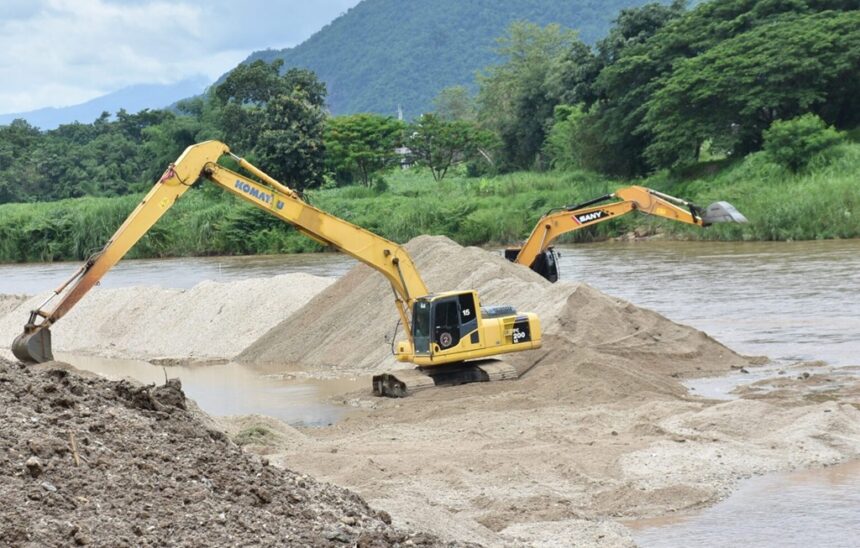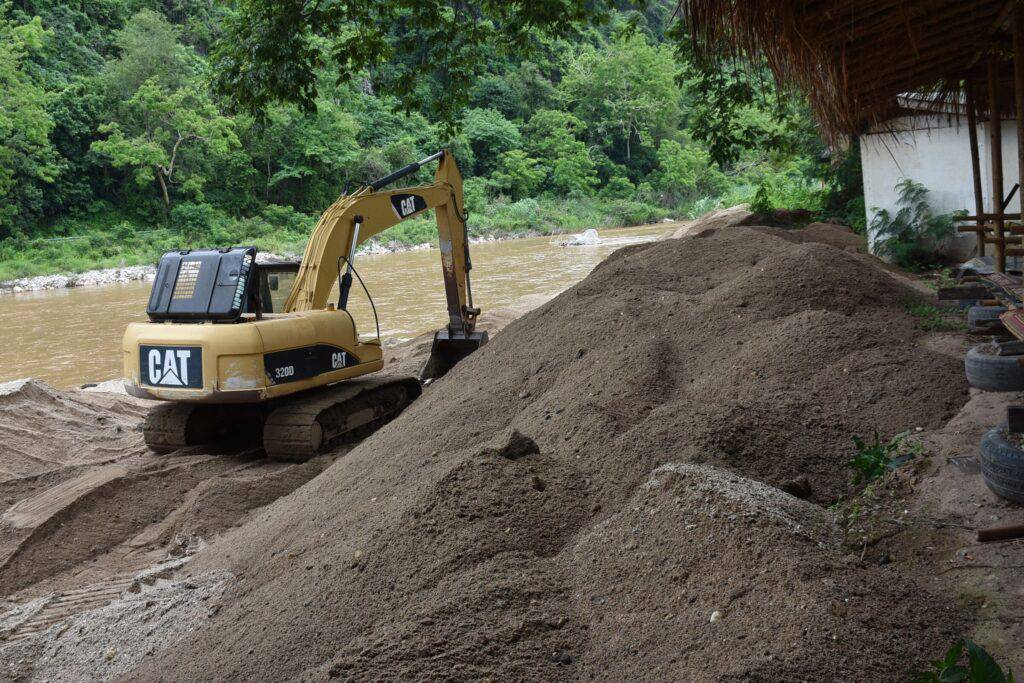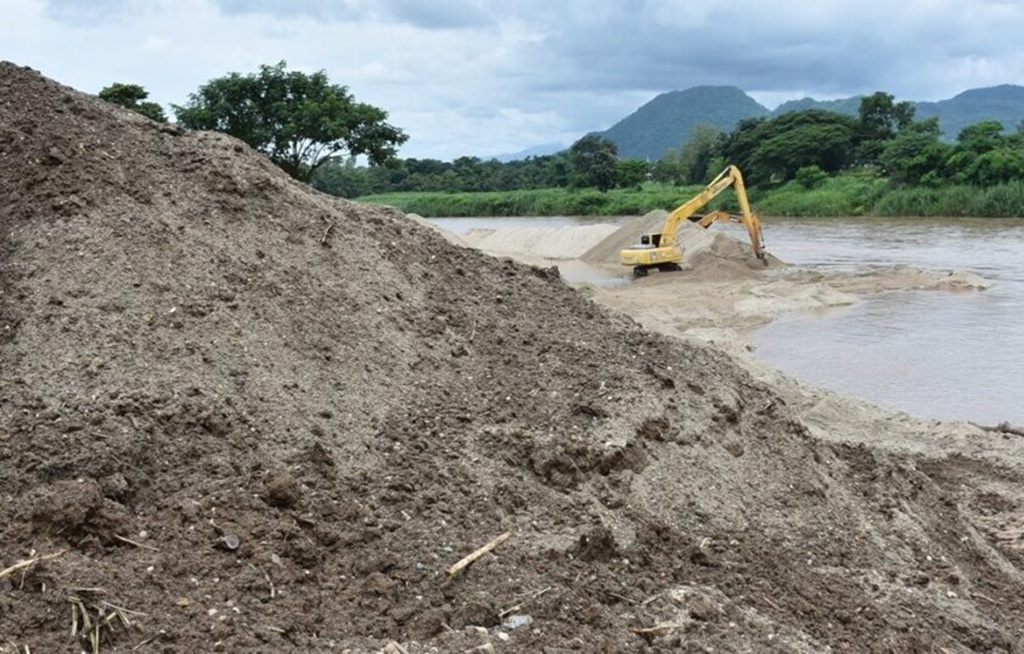CHIANG RAI – On Wednesday, more than 10 excavators and other heavy machinery continued dredging the Kok River near Chiang Rai beach in the Muang district. The project is part of ongoing efforts to prevent flooding during the upcoming rainy season in 2025.
This area has many local shops and a dense community. Each dry season, sandbanks appear along the river, attracting tourists.
The dredging follows the planned schedule, piling up river soil and sand along the banks. This not only deepens the water channel but also builds up the riverbank to help hold back rising water.
Some experts have voiced concerns about potential heavy metal contamination, especially arsenic, in the dredged soil. Despite this, the project is moving forward, and there are currently no special measures in place to address these concerns. The soil and sand stay on site and are not used elsewhere.
Amphon Inta, a 70-year-old food vendor whose shop sits right next to the dredging site, shared her thoughts. Last year’s flooding caused major damage to local businesses. She’s preparing by moving valuables to higher ground and keeping only what she needs at the shop.
She isn’t worried about arsenic since people don’t come in direct contact with the river or soil. Amphon believes sunlight will dry out the sand and dirt, making them safer over time, although she avoids touching or using the fresh soil at first.
She feels that Kok River dredging helps prevent flooding, as long as water levels do not rise too much, like last year. The damage from floods is much worse than any risk from arsenic. After last year’s flood, she used up her savings to repair her shop and even had to borrow more money.
Amphon wants the government to address both flooding and arsenic issues, as these problems affect her business and income. She’s just managing to get by for now, but if things don’t improve in the next two years, she may need to find another way to earn a living.
Chiang Rai Governor Charin Thongsuk reported on the flood risk and preparation plans for this year. The province has 126 medium and small reservoirs, with water levels at about 53 percent of capacity, or 190.8 million cubic metres.
This amount can be managed according to government guidelines. Dredging work is underway in reservoirs, retention ponds and in front of weirs across the province, removing over 5 million cubic metres of soil to increase water storage.
To improve flood warning systems, the province has installed four automatic telemetry stations in the Mae Sai area. They plan to install 21 staff gauges along the Kok River and the Sai River to monitor water levels. Residents from the river’s upper to lower reaches have received training to help spread warnings quickly and keep everyone prepared.
















